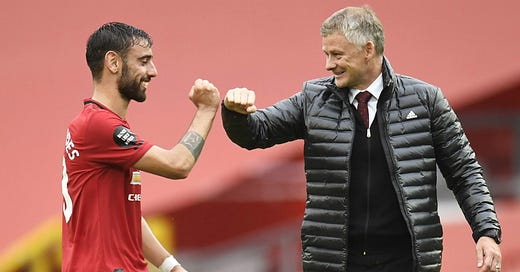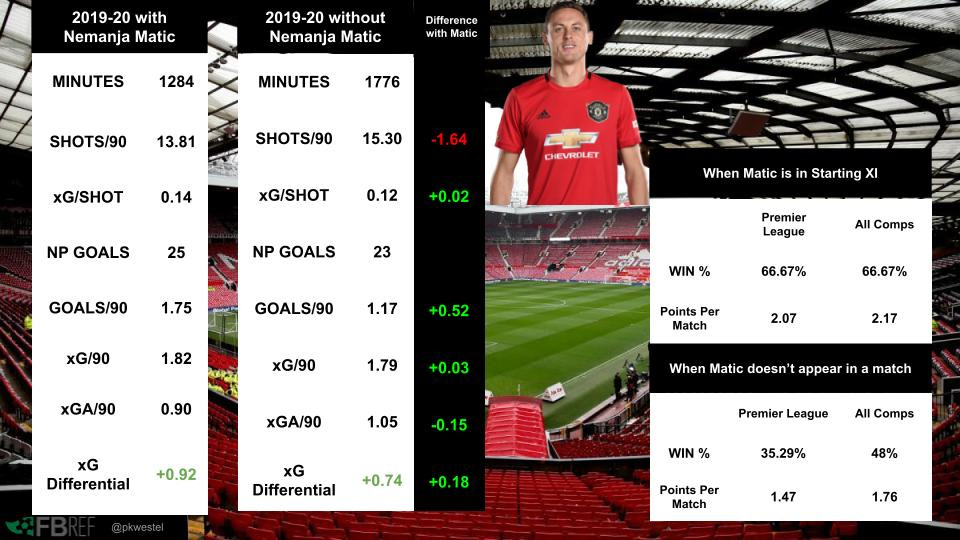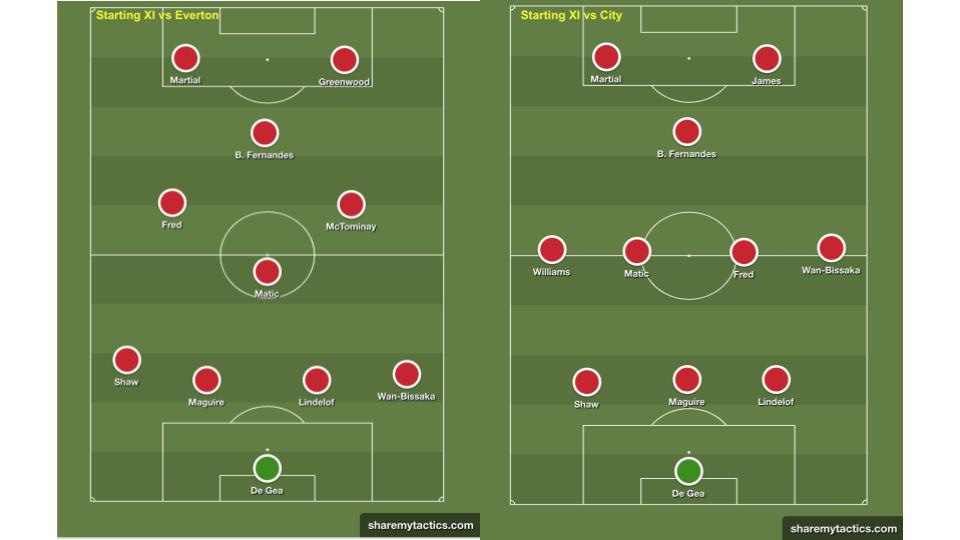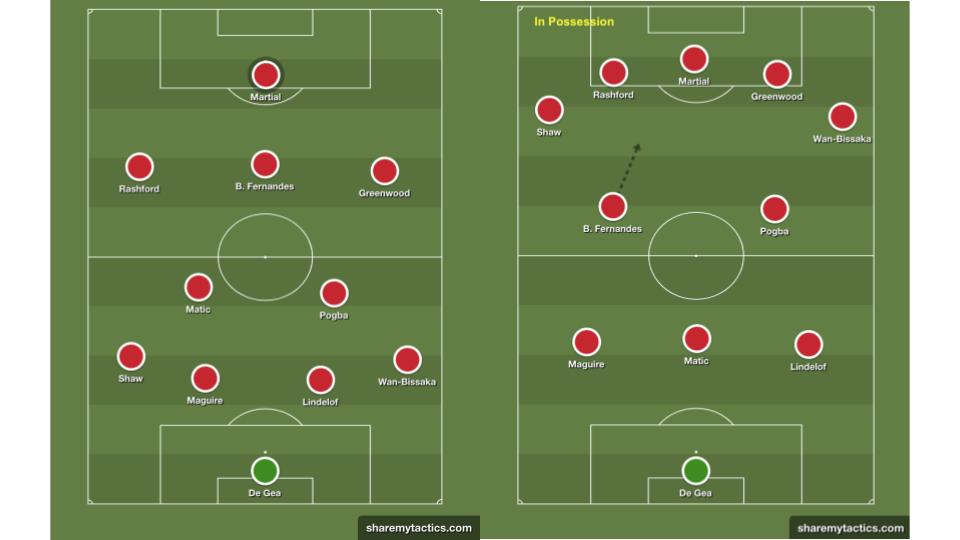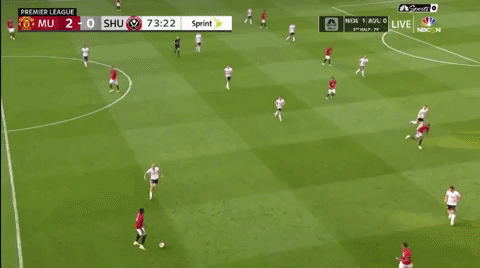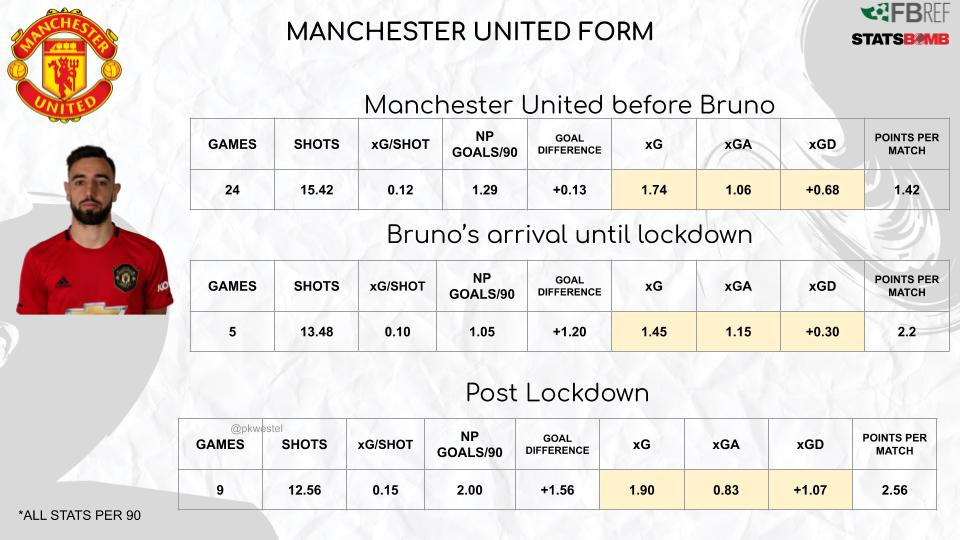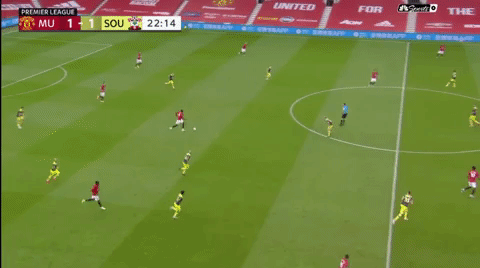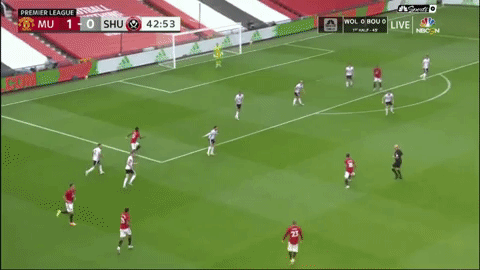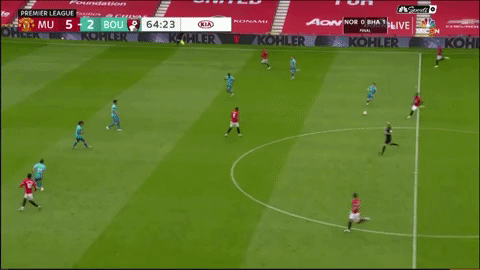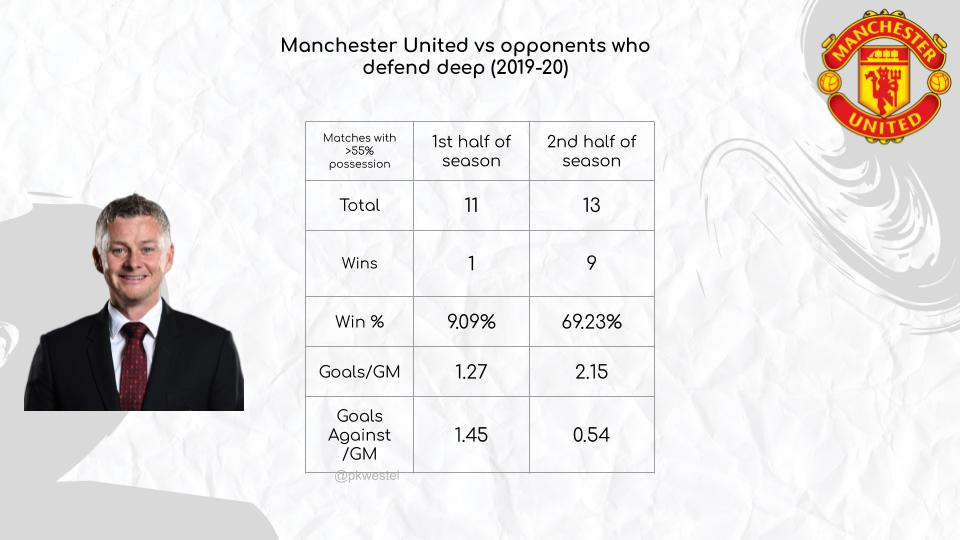Note: this is part four of a five part series on Ole Gunnar Solskjaer and the distinctly different tactical ‘eras’ he’s had during his two years in charge of Manchester United.
Please read the introduction for more information and if you haven’t done so yet, subscribe for more of Kwest Thoughts. If you missed it, click here to go back to Part I
Period: June 2020 (Tottenham away) - August 2020 (Sevilla)
Base Formation: 4-2-3-1
Most Benefitting Player: Bruno Fernandes
Second Standout Player: Anthony Martial
Key Player: Nemanja Matic
There was a bit of a lull between the injury to Marcus Rashford and the definitive start of Ole Gunnar Solskjaer’s next distinct tactical era. The month of January looked a lot like the end of the 2018-19 campaign with Solskjaer having to deal with a very injured squad which caused plenty of changes.
The biggest issue was with the loss of Rashford United didn’t have a threat down the left side. This resulted in Martial kind of having to do both his job as a center forward and Rashford’s job as a LW when United played in a 4-2-3-1. If that sounds ridiculous, it was, and United greatly struggled in that formation as overworking Martial made him completely ineffective. To try and alleviate this Solskjaer tried to show more back three looks to varying amounts of success.
The good news for United was around this time Nemanja Matic came back into the team, which greatly helped bolster up the defense. If United were struggling for goals, not conceding them was an absolute must. Matic would go on to play a massive part in the second half of United’s season.
There was one more piece of good news. United got reinforcements. Not just any reinforcements but Bruno Fernandes. A creative midfielder who was everything United needed on and off the pitch.
Tactically, Bruno Fernandes and Ole Gunnar’s 4-2-3-1 was the perfect marriage. What United needed their number 10 to do was exactly the skill set that Bruno possessed. United weren’t going to need to change a thing to accommodate Fernandes which allowed him to hit the ground running.
Tactically this period was still just mixing and matching. Bruno started his first game as the 10 in a 4-2-3-1 but a suspension to Nemanja Matic meant that Andreas Pereira had to start beside Fred in midfield.
Within 30 minutes it was obvious that wasn’t going to work, and Solskjaer had to swap Bruno and Pereira.
A front four of James, Martial, Mata, and Pereira was exactly as creative as you’d expect. With Martial still having to do that cover the LW thing it was hard for him to get involved as well.
The next few games saw Solskjaer constantly changing it up. He went to a back three against Chelsea, a 4-2-3-1 against Watford, a 4-4-2 diamond against Everton that was nearly a disaster, and a back three again against Manchester City.
United ground out results thanks to good defense and finally cashing in on set pieces.
It is definitely questionable as to how long they would have kept this run going. Without Rashford they were doing a lot of this with smoke and mirrors (Paul Pogba was expected back for the Tottenham match). Their participation in the FA Cup and Europa League certainly boosted their record. Between signing Fernandes and going into lockdown, United won just three of their six league games. They may have won the second most points in that time, but expected points (xPTS) had them seventh. Their xPTS per game dropped from 1.84 to 1.59.
In a storm of all the bad that COVID 19 has brought, one small silver lining for Ole Gunnar Solskjaer was he’d never have to answer that question. The pandemic brought a three month pause to the season, and when it resumed Solskjaer would have his full squad available allowing him to play exactly how he wanted to.
I have no idea why Solskjaer picked the team he did to face Spurs in the first game out of lockdown. It was basically the team from the first half of the season - plus Fernandes - with James on the right wing and McTominay and Fred in midfield. In 60 minutes those guys proved they aren’t the ones.
By the next game, it was clear Solskjaer knew his preferred XI. It wasn’t just that they were better than the other guys, but they were playing an entirely different style of play than before.
Out of possession, the team played in a 4-2-3-1 just as they’d always done, but in possession everything changed, as Nemanja Matic would drop between the centerbacks to form a back three. Up front, Rashford and Greenwood would tuck inside as inside forwards, with Shaw and Wan-Bissaka coming all the way up the pitch to create a front five.
It created a 3-2-5 formation that left all the space in the middle of the pitch for Bruno and Pogba to operate as duel number 8’s. Occasionally we’d also see Rashford push wide with Bruno coming forward and Shaw tucking into midfield next to Pogba.
To say it worked would be an understatement. United played scintillating football right from the start, highlighted by a wonderful team goal to complete Anthony Martial’s hat trick.
This tactical shift unlocked United as the Red’s played brilliant football during project restart. The fullbacks pushing up to form a front five left the middle of the pitch wide open for Bruno Fernandes to dictate the game.
Bruno’s arrival began a run of results for United but there was a bit of a case of over performing their metrics. But it was the combination of Bruno and the returning Paul Pogba that saw United hit a new level.
Leading that charge was of course Fernandes. The Portuguese scored three non-penalty goals and added four more assists as United became a scoring juggernaut.
Pogba and Bruno patrolling the middle of the pitch enabled Anthony Martial to move away from playing as a false-9 who’s primary job was to link play up, to solely focusing on getting into the box and scoring goals. The Frenchman duly obliged, scoring six goals and adding four assists over the final nine games of the season.
The 3-2-5 possession in formation put more emphasis on the fullbacks contributing going forward albeit in different ways. On the right, Wan-Bissaka was your traditional attacking fullback. Getting wide and pumping in crosses with a specific focus on low driven crosses.
Wan-Bissaka enjoyed his best stretch of the season here. Over the second half of the season his expected assists per 90 rose to 0.16 compared to just 0.04 over the first half, and in project restart he posted a 0.54 xG Buildup, beating out his season average of 0.34 (understat). He also chipped in with two of his four Premier League assists on the season, and frankly he should have had a third if not for a tight offside decision.
On the left, Shaw would either push forward to the front five, or step into midfield and allow Bruno to push up into the front five. This made Shaw much more involved in United’s buildup play.
It may have been overlooked at the time but Shaw was a key component to the system. After his injury against Southampton, United not having a left footed back up proved to be tremendously costly. Brandon Williams did an admirable job filling in, but his propensity to turn onto his right foot when receiving the ball slowed everything down and allowed defenses to overload the middle. Overnight United’s attack went from free-flowing to laborious. The team struggled for goals over their final three games.
Overall, the biggest benefit to this formation was it solved United’s biggest problem. In the first half of the season the knock on Solskjaer was he could beat the big teams when he just had to play counter attack, but the smaller teams like Bournemouth and Sheffield United, who wanted United to have all the ball, were too big of an obstacle.
United were still as good as ever on the counter attack…
but playing against a club that just wanted to sit deep was no longer the issue it used to be as United began handily taking care of business in those games as well.
The key to this all was Nemanja Matic. His introduction into the team in January bolstered the defense allowing to pick up wins even before the goals started coming in. Post lockdown it was his role of splitting the center backs to form a back three that really unlocked United. Matic gave United’s back line a left footed option to pass out from the back with, and that back three provided cover for their attacking players pushing forward.
Lead by Bruno Fernandes, United became one of the most exciting teams in the league. Mason Greenwood - now getting consistent minutes off the right - was announcing himself to the league - scoring four goals in his first four starts. On their day, their first XI could go toe to toe with anyone.
But that was the problem. For the second time in his managerial tenure Manchester United’s best form was highlighted by the fact that Solskjaer was picking the same XI every single game. And as the injury to Luke Shaw highlighted, when one of those XI came out, the whole machine broke down.
United were only 11 players deep (12 if you count Fred). Mason Greenwood’s hot start lead to teams quickly learning how to defend him (he scored only one more goal all season), further proving that he wasn’t the answer at right wing. United desperately needed cover for Fernandes and/or Pogba as the team’s numbers with only one of them took a major dive compared to with both of them.
United needed players who could rotate into the team to prevent the starters from burning out. They needed game changers off the bench - this was a team that won just two games when they had fallen behind at any point.
Considering where they started - and where they were just two months into the season - Ole Solskjaer did a fantastic job and had a wildly successful first full season in charge. But if United wanted to get to the next level, there was still a lot of work to be done.
Up next - Part Five: No right winger and the mid-block press

